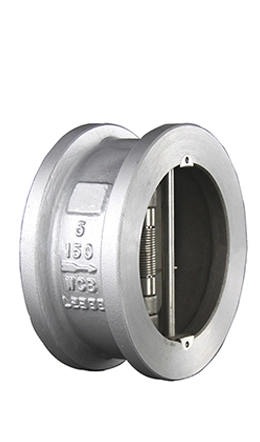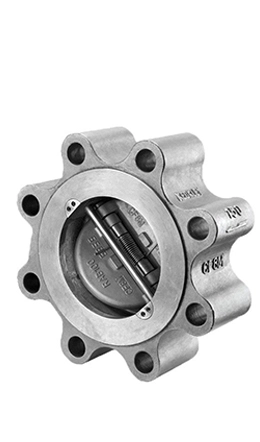Dual plate check valves are mechanical valves that prevent backflow and ensure fluid flow in one direction. For anyone interested in learning more about this significant piece of engineering technology, this article provides a comprehensive overview of its design, principles, and applications. Dual plate check valves, also known as check valves with two plates and two plugs. They are used in major HVAC/R systems, water supply lines, oil/natural gas pipelines, steam and condensate systems to regulate liquid, gas, steam, and steam volumes.



The dual plate wafer check valve is a compact, efficient valve designed to prevent backflow in pipelines. Its streamlined structure and unique dual-disc mechanism make it ideal for applications where space, weight, and rapid closure are critical.
1. Key Components
Body: Thin, wafer-shaped housing that fits between ANSI/ASME/DIN flanges.
Materials: Cast iron, carbon steel (WCB), stainless steel (304/316), or duplex steel for corrosive environments.
Dual Plates (Discs):
Two semicircular plates hinged on a central pin.
Designed to swing open in the direction of flow and close under backpressure or gravity.
Plates are often coated with rubber (e.g., NBR, EPDM) or made of metal for tight sealing.
Hinge Mechanism:
Central hinge pin allows discs to pivot freely.
Bushings or bearings ensure smooth rotation and reduce wear.
Springs (Optional):
Spring-assisted models include helical springs to ensure rapid, non-slam closure, minimizing water hammer.
Seat Rings:
Resilient elastomeric seats (or metal-to-metal for high temperatures) ensure leak-proof sealing when closed.
2. Working Principle
Forward Flow: Fluid pressure pushes the dual discs open, allowing unobstructed flow. The discs fold parallel to the flow, minimizing turbulence.
Reverse Flow: When flow stops or reverses, gravity, backpressure, or springs snap the discs shut, preventing backflow.
3. Design Features
Compact Wafer Profile:
No flanged ends or additional bolting—installed directly between pipeline flanges.
Ideal for tight spaces (e.g., HVAC systems, ship pipelines).
Low Pressure Drop:
Open discs create a straight flow path, reducing resistance and energy loss.
Non-Slam Closure:
Spring-loaded variants close before flow reversal, eliminating noise and pipe stress.
Bidirectional Compatibility:
Some designs allow installation in any orientation (horizontal/vertical).
